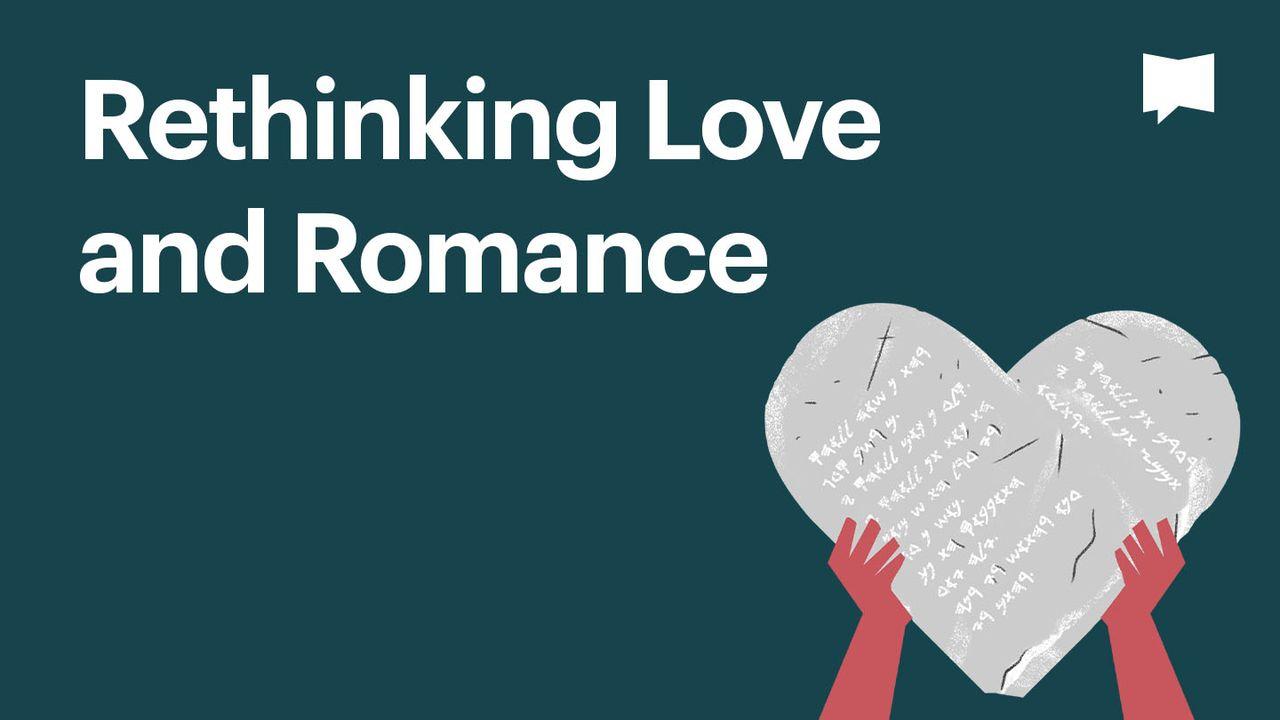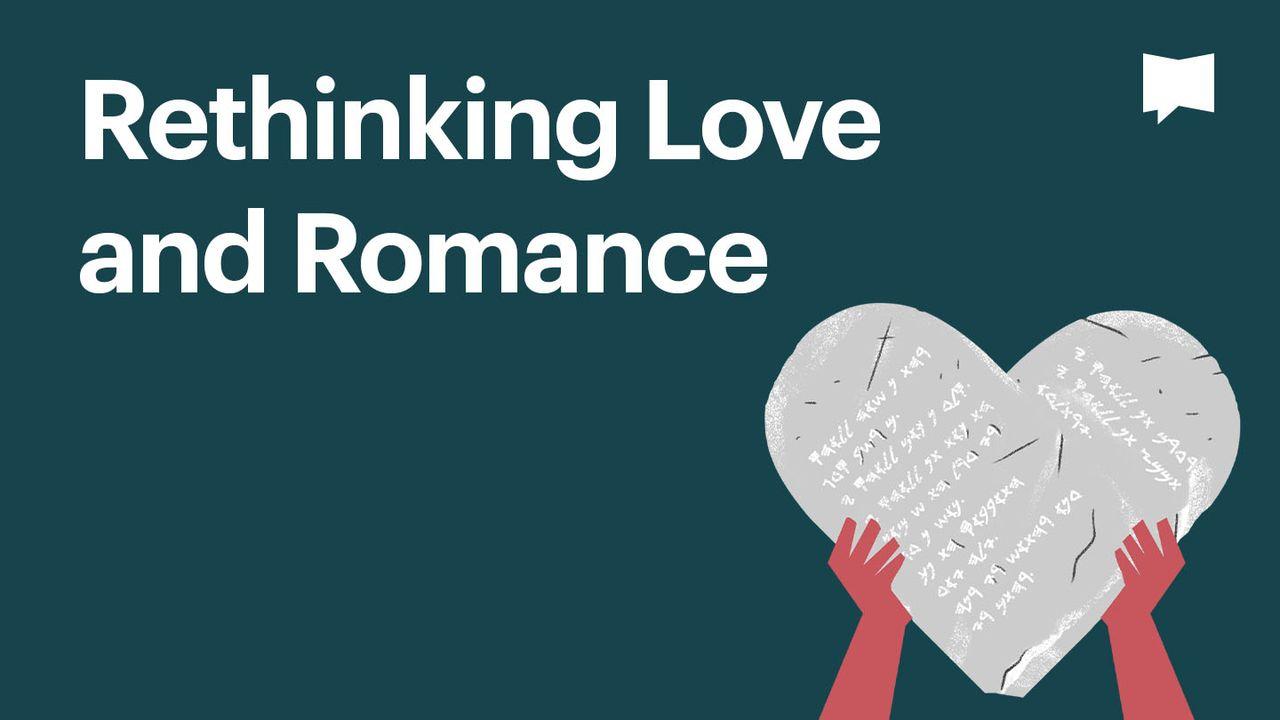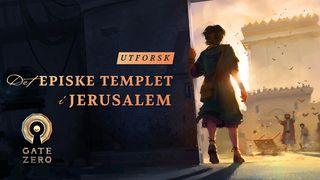Leseplan-informasjon
BibleProject | Rethinking Love and RomancePrøve

Let’s take a look at the first loving relationship in Scripture.
In Genesis 1, God speaks creation into existence. We are then transported to a garden filled with trees, rivers, and animals (Gen. 2). Over and over, the authors show God declaring his creation “good” (Hebrew: tov ), that is, until he sees the human (Hebrew: adam) alone. Now the authors introduce a problem—an intentional literary design move—as they show God saying it is “not good” for the human to be alone (Gen. 2:18). But why?
God solves the problem by first dividing Adam in half (Gen. 2:21). We often talk about this as though God took a rib from Adam and created Eve with it, but the Hebrew word tsela (often translated as “rib”) is never used as an anatomical term in any other passage in Scripture. Outside of Genesis 2, the word is mainly used to describe the architecture of the tabernacle or temple (e.g., Exod. 25-38; 1 Kgs. 6-7; Ezek. 41). The biblical authors use tsela to refer to the two halves of the ark of the covenant, the two halves of the temple, and the two halves of the new Jerusalem. So God’s creation of Eve is a process of dividing Adam in half and then building Eve from one side of him. We get a portrait of two humans, each one half of a united whole, deeply dependent on the other. Adam's goodness and life depends on Eve, and hers depends on his.
Then God calls this woman an ‘ezer kenegdo . The Hebrew word ‘ezer might be translated as “help,” but it does not mean what we might assume. An ‘ezer is not a lesser “assistant” or “helper” as much as it is someone who plays the mutual role of an “indispensable other,” a strong and wise guide, without whom the intended good cannot happen. The only other character in the Bible given this title (‘ ezer ) is God himself. Not your average helper, right?
For the second Hebrew word, kenegdo , we might use a metaphor of mirroring to get to the core idea. A helpful paraphrase of Genesis 2:18 might be: “It is not good for the human to be solitary. I will make one who can deliver him from his inability to fulfill the divine commission alone, one who mirrors him.”
The biblical authors are presenting this bonded, united relationship between two people as God’s good design for humanity. The “one flesh” of Genesis 2:24 transcends the union of the sexual act (though that is one way the one flesh unity may be experienced). So how is this idea different from the “you complete me” sentiment?
Adam and Eve "complete" one another—not by satisfying each other’s personal desires but by becoming unbreakable partners who seek the other's well-being. Today’s popular understanding of romance rarely gets past the "satisfy my desires" sense of love. But the authors of Genesis describe this “unbreakable partners” sense of love as a foundation for human flourishing and tov—the goodness and right-functioning of creation itself.
In the final verse of Genesis 2, we discover that the man and woman were naked and unashamed—an image of pure trust, openness, vulnerability, and safety. When one is genuinely unified with another, there is no need for self-protection or projection of a false self. In their most vulnerable state, the man and woman were at rest. They had nothing to hide, no secrets or lies between them, no power grabs, hierarchies, or abuse. Instead, they had a portrait of love at peace.
In today’s video, explore God's plan for Adam and Eve (and all humanity) to serve as royal priests over all creation.
Skriften
Om denne planen

BibleProject designed this plan to help individuals, families, and groups reflect on the biblical concept of love. We'll look at the Hebrew and Greek words for love, unpack biblical love stories, and apply their wisdom t...
More









